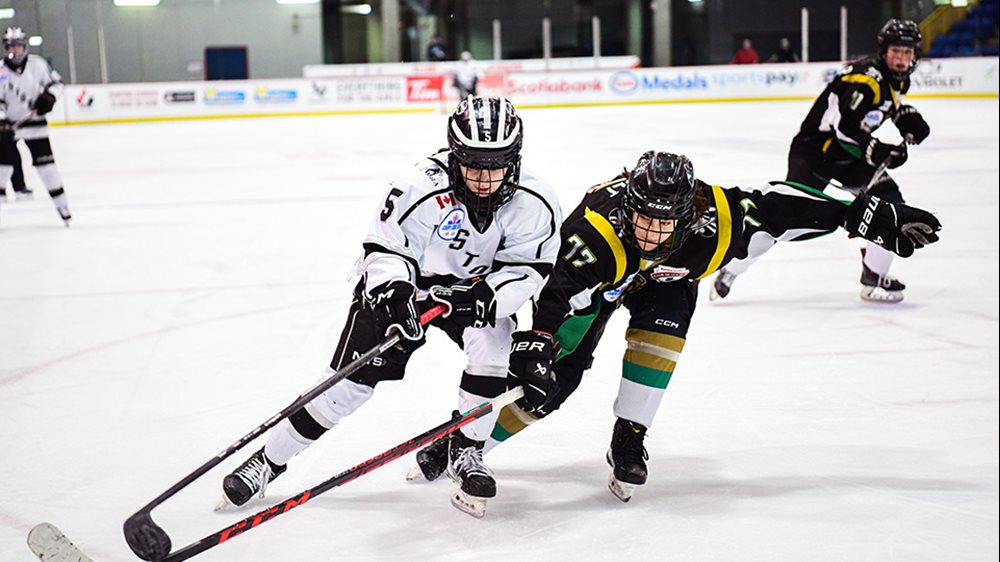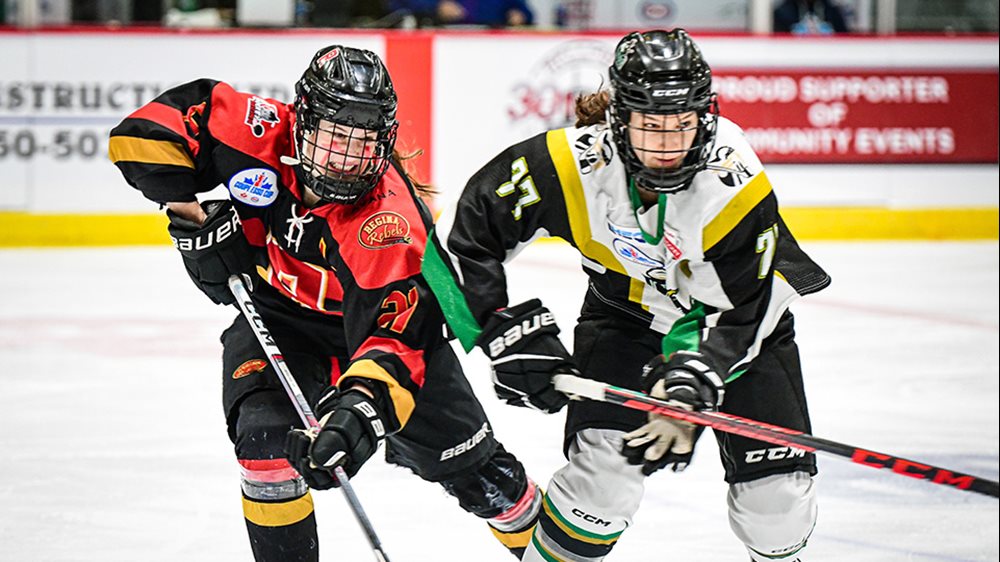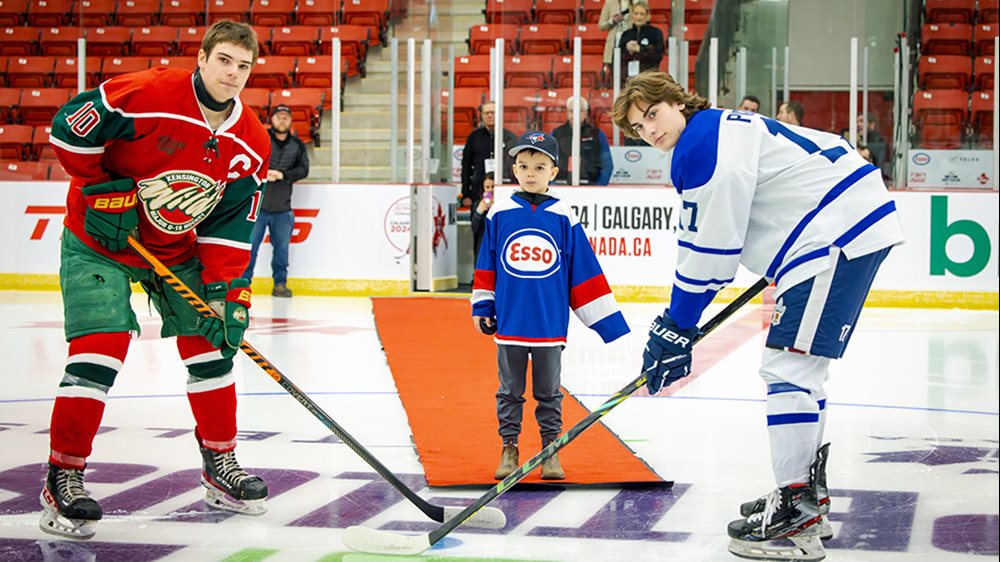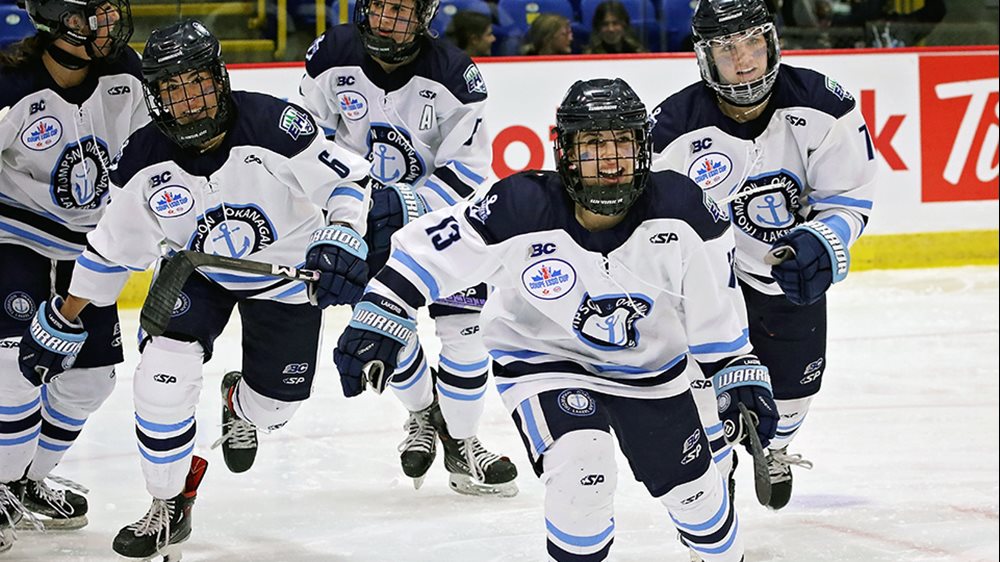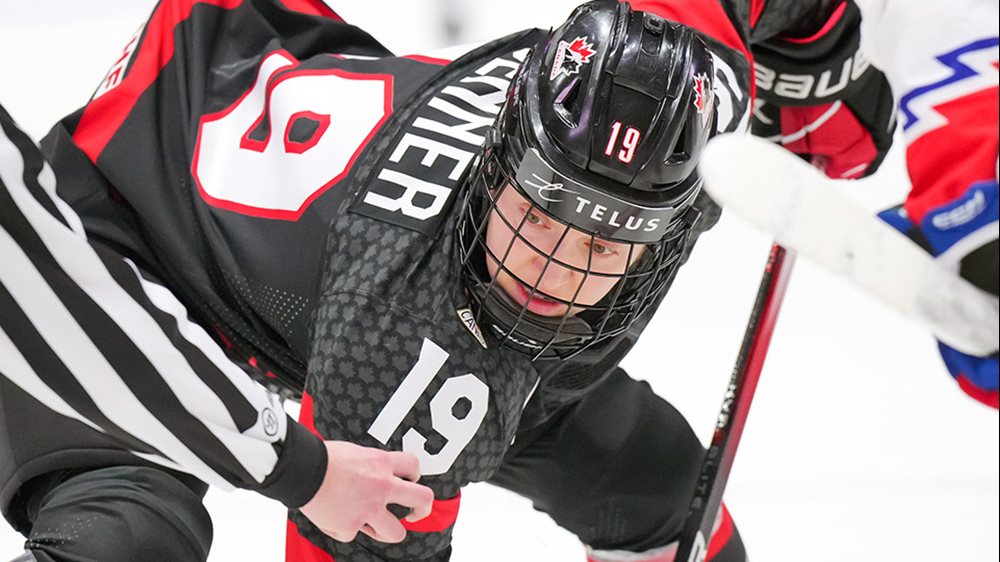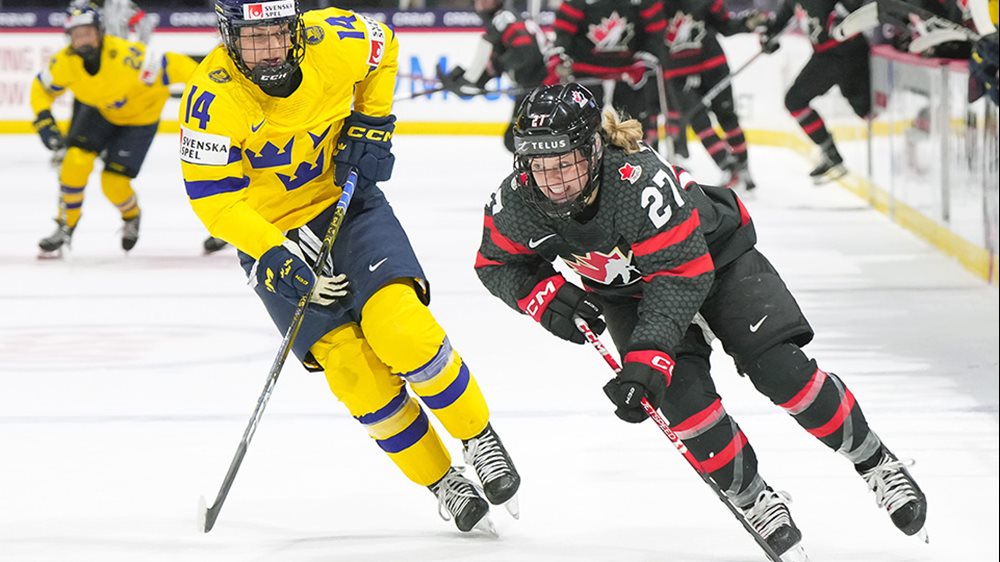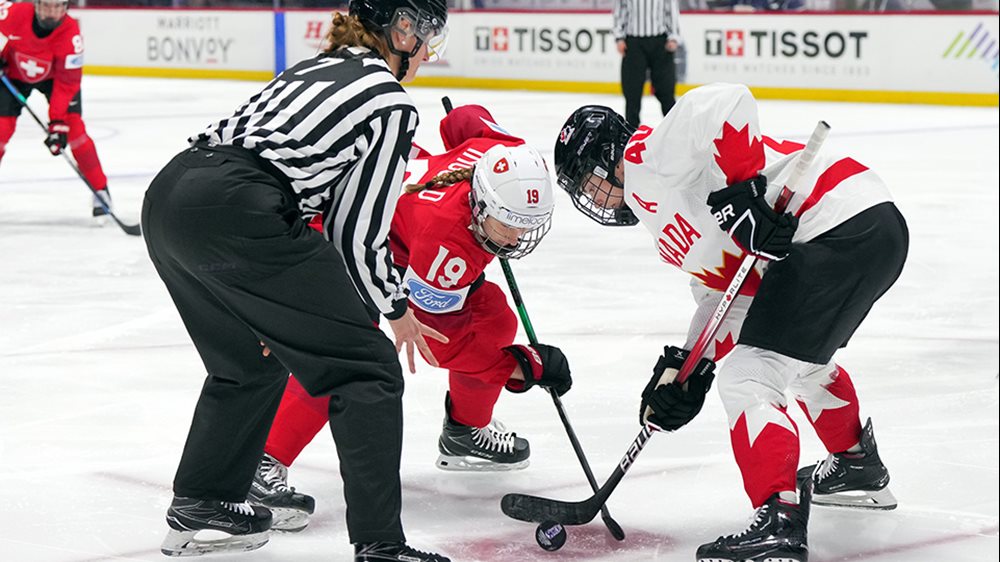
Close-ups of Messier, Yzerman, Robitaille and Lemieux leading Canada to victory
Barrie Stafford on how The Oilers Way influenced the international game
Players, coaches and managers came and went from Team Canada between the 1984 Canada Cup and the 2004 World Cup, but one thing remained the same for Canada’s biggest international hockey wins: trainer Barrie Stafford was behind the scenes as the team’s equipment manager.
“I was lucky enough to be behind the bench for some of the greatest games ever played in that era,” Stafford says.
What stands out most for Stafford is the fierce determination that Canadian players had to win, exemplified by stars like Steve Yzerman and Mario Lemieux playing through serious injuries, and Mark Messier taking charge with dominating physical play.
Stafford has the utmost respect for the players able to come through for Canada under such crushing pressure. “Whether it’s the Olympics or Canada Cups, you’re going to let your country down if you lose,” he says. “People don’t realize how much pressure is on these guys.”
The 1984 tournament was Stafford’s first international match. Oilers coach Glen Sather was named Canada’s coach, so he was allowed to bring in his own crew, including Stafford. For Sather, it was an easy call. “Barrie had a great relationship with the players,” he says. “He ran a good ship. I thought he was terrific. If they had a Hall of Fame for trainers, Barrie should be in it.”
In 1984, Canada was out for revenge, having been crushed by the Soviets in 1981 and at the 1979 Challenge Cup. The Oilers contingent on the squad included Messier, who had that season come into his own as the most feared physical force in the National Hockey League.
Stafford remembers Messier’s rapid development as an intimidating force after the 1983 Stanley Cup finals, when the Oilers lost to the New York Islanders. In that series, Islanders Bryan Trottier had outplayed the Oilers big guns. “Trottier was the leader of that team,” Stafford says. “He was someone the whole hockey world looked up to, not just us.”
But during one regular-season game in the 1983-84 season, Stafford recalls how Messier changed the script with Trottier and the Islanders. “Trottier took a (faceoff) draw and beat him, and Mark just cross-checked him hard, almost broke his stick and knocked him down to his knees. I was like, ‘Our boys really want to win this!’ For me it was a turning point. It was the David and Goliath thing. If you have too much respect for the opposition, you’re not going to take charge, and that’s the kind of things championship teams do, they take charge.”
Did Stafford ever feel that Messier went too far on the ice?
“I don’t think anybody would have thought about Mark in that way because everything he did, he did for the team.”
But what about the infamous elbow to the face of Vladimir Kovin at the 1984 Canada Cup, which left the Russian player writhing on the ice with a gash that took 28 stitches to close? “I don’t think he went too far,” Stafford says. “He hit the guy because he wanted to set the tone early, not just for the team, but for the entire country: Canada means business.”
The Oilers way of winning also had an impact on the 1987 Canada Cup, when young Pittsburgh Penguin Mario Lemieux learned by following Gretzky and Messier’s lead. “He was very quiet and respectful, and Wayne took him under his wing,” Stafford says.
Lemieux says he observed the work ethic and attention to detail of Gretzky and the other Oilers. Pittsburgh was a losing team at the time, he says, so he was unfamiliar with such intensity. “It was a totally different mindset.”
Having Stafford in the Team Canada dressing room also set a positive, welcoming tone, Lemieux says. “He was always upbeat, very positive, every last day. … Barrie was there to make sure I felt comfortable with these guys.”
Most importantly, Lemieux says Stafford made him feel part of the team by giving him and others the same expert assistance with their gear as he did to all the Oilers stars. “He did the same for everyone else, even the guys who weren’t playing in the games.”
The quality of Stafford’s work was noticed by other players on other teams, says Gretzky. “They saw how good and how important our trainers were to our hockey team, and I think that was an eye-opener to a lot of guys.”
For example, Stafford first worked on the skates of L.A. Kings sniper Luc Robitaille at the 1991 Canada Cup, giving Robitaille’s blades a flatter hollow, similar (though less extreme) to what Stafford had perfected with Paul Coffey in Edmonton to give Coffey more speed and glide.
“You’d get on the ice and you felt like you were totally gliding,” Robitaille says. “It was amazing how good it felt. Next thing you know, my back wasn’t bothering as much and things were feeling a lot better. I was known to not be a great skater, so he really helped me.
“I teased Barrie because he ruined me,” Robitaille adds with a laugh, saying he started to push his own trainers to replicate Stafford’s work. “Whenever I would leave him, I’d be a nightmare to our trainer. Barrie was good, so precise, he brought skate sharpening to an entire other level.”
In 2002, Lemieux and Stafford were again on the Team Canada squad, this time for the Salt Lake Olympics. Lemieux was 35 by then, his career winding down and his hip injured so badly he would need surgery right after the tournament. But there was no question Lemieux was Team Canada’s leader, Stafford says. “We were so happy he was our captain. People said he was in the twilight of his career, but from Day 1 he was our best player.
“I knew my career was winding down,” Lemieux says of those Olympics. “I wanted to be a part of it. I gave it everything I had.”
Another leading Canadian player who fought through a major injury was Yzerman. Yzerman had won Stanley Cups by 2002, but he’d never had much international success.
He was hungry for it, but heading into the tournament, it looked like his badly injured knee might slow him down substantially. He had had surgery in 2000, then again just a few weeks before the Olympic tournament.
Gretzky, the team’s manager, remembers visiting Yzerman in the hours before the final game against the United States. Yzerman was getting treatment to take down the swelling and deal with the pain early that morning from athletic trainer Kenny Lowe.
“I was just talking to Stevie about how he’s doing and how he’s feeling and, you know, Stevie was obviously very positive, ‘I feel great,’ ” Gretzky recalls. “And when I walked out of the training room, Kenny Lowe came chasing after me and he said, ‘I want to tell you something right now. If this was Game 7 of the Stanley Cup finals, I wouldn’t let this guy play.’ I said, ‘Well, thank God we’re not playing Game 7.’ ”
Yzerman insisted on playing. In the final, he assisted on a crucial goal by Jarome Iginla.
By 2002, Stafford had been through a dark decade of losing with the Oilers, but the Team Canada squad was a different story, with a different quality of player, as Stafford realized in the hours before Team Canada’s first big game in Salt Lake. He made his rounds, making sure every player had the equipment he needed in proper repair, at the same time offering his encouragement to the squad.
“Let’s go, guys!” he said. “Let’s get it going.”
Just then, Stafford looked around. “I thought, ‘There’s Steve Yzerman, there’s Mario Lemieux, there’s Joe Sakic, there’s Chris Pronger.’ I just remember I caught myself and I thought, ‘I guess I don’t need to help motivate this group.’ It was almost funny.”
All Canadian hockey fans know of the big wins in the big tournaments, but one of Stafford’s most memorable hockey experiences came at the 1994 world championships. The tournament is now largely forgotten in the annals of Canada’s international hockey successes, but not by the members of that team, who still greet each other like old friends, having triumphed over some adversity — some of it self-imposed — to win the event.
Canada had had little success in the world tournament. It hadn’t won since the 1961 Trail Smoke Eaters. NHL players attended it somewhat grudgingly at the time and only if they had failed to make or were bumped out of the Stanley Cup playoffs. They kind of frowned on the event, Stafford says. They went to play some hockey but also to have a good time.
But the 1994 team, coached by George Kingston, had recruited a strong group, including young stars such as Rob Blake, Luc Robitaille, Joe Sakic and Brendan Shanahan, with Billy Ranford of the Oilers still near his prime, as the goalie.
The team won its first few games, then had a two-day break between games. With only a practice scheduled for the next day, the players decided to have some fun. Many of them were up into the early morning hours, merrymaking around the hotel.
The next morning, Stafford got to the rink at 8 a.m. and found some of the players already there. “It’s one of those things where you walk in the locker-room and it smells like a brewery,” he says.
The coaches knew a group of players had misbehaved. When it was time to go out on the ice, the coaches let the players sit and stew in full equipment. “These poor coaches were devastated,” Stafford says. “They were so disappointed that our team would do this.”
At last, 20 minutes after practice was to have started, Kingston came in and gave perhaps the most inspirational talk Stafford has ever heard.
Kingston had a stack of Canadian passports and he held them as he talked. “He gave a speech that was as patriotic as you’re going to get,” Stafford says. “He basically told everybody that it’s selfish to be acting the way you guys are acting. Right now we’re on the world stage. We’re representing Canada here. This is a tournament where Canada doesn’t have a good reputation. We haven’t won it in the past. But this is a special time. We’ve got a good group here. We have an opportunity to go down in history and win this tournament and put Canada back on the map. Do you realize how important this is?”
Just then, Kingston took the passports and threw them on the floor to punctuate his point.
Kingston sent the players home to think about their priorities. “To me, that was the turning point of the tournament,” Stafford says. “A lot of things went right after that.”
Team Canada went on to win every game in the tournament. In the final, Luc Robitaille scored two big shootout goals, while Ranford stopped everything. “At the time, it seemed just as intense as the seventh game of the Stanley Cup finals,” Stafford says. “It doesn’t get more intense, any more pressure.”
Stafford recalls an amazingly focused Ranford coming over to the bench for a drink of water between making saves in the shootout. “I remember thinking, ‘There’s no way they’re going to score on this guy. No way!’ I was so excited. He was in a zone like I’d never seen.”
After the game, the players celebrated as if they had won a Stanley Cup. It was an awesome feeling, Stafford says, but, as always, he had to immediately get packing for the departure of the team. He was getting at the work when he went into a quiet backroom of the arena, away from the wild celebration of the locker-room. “I see (winger) Steve Thomas, all by himself. It’s bizarre.
“It’s total chaos, it’s jubilation, just like a locker-room when you win the Stanley Cup, and I go around the corner, and there’s Steve Thomas, all by himself, sitting down on a box and he’s crying. I walk in and I say, ‘Stevie, are you OK?’ He’s got tears in his eyes and he says to me, ‘This is the first time I won anything in my whole life. This is the first time I ever won anything.’
“That was a pretty special thing.”
For more information: |
- <
- >














